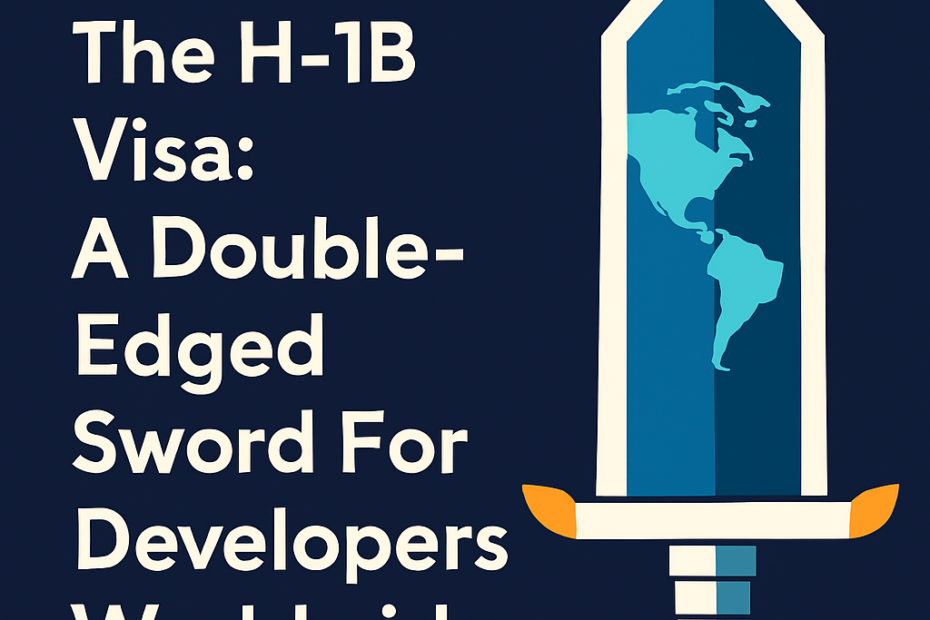In the global tech ecosystem, few topics stir as much debate as the H-1B visa. For many developers outside the United States, it represents a golden ticket—a pathway to Silicon Valley, higher salaries, and cutting-edge innovation. But beneath the surface lies a complex reality: one that blends opportunity with vulnerability, ambition with uncertainty.
🌍 The Promise: Gateway to Global Innovation
For developers in countries like India, China, and Brazil, the H-1B visa is often seen as a career-defining milestone. It opens doors to:
- Top-tier companies like Google, Amazon, and Meta
- Exposure to advanced technologies and large-scale systems
- Higher compensation compared to local markets
- Networking opportunities with global talent
Take the example of Priya, a Laravel developer from Pune. After years of freelancing and contributing to open-source projects, she landed an H-1B-sponsored role at a San Francisco startup. Her salary tripled, her GitHub profile exploded with activity, and she began mentoring junior devs worldwide.
⚠️ The Pitfalls: Fragile Foundations
But the H-1B journey isn’t all smooth sailing. The visa is tied to the employer, which creates a power imbalance. Developers often face:
- Limited job mobility—switching employers can be legally and logistically difficult
- Uncertainty during layoffs—a 60-day grace period to find a new sponsor or leave the country
- Visa lottery stress—even qualified candidates face rejection due to random selection
- Family and lifestyle disruptions—spouses may not be allowed to work, and children face residency issues
Consider Ahmed, a Vue.js expert from Egypt. After two years at a fintech firm in New York, he was laid off during a restructuring. Despite his skills and experience, he couldn’t secure a new sponsor in time and had to return home, leaving behind unfinished projects and personal ties.
🧠 Brain Gain vs. Brain Drain
From a macro perspective, the H-1B visa fuels American innovation by importing global talent. But it also contributes to brain drain in developing countries. Local ecosystems lose their best minds, and the cycle of dependency deepens.
Yet, some developers flip the script. They gain experience abroad and return home to build startups, mentor communities, or launch educational platforms. This reverse brain drain can be a powerful force—if supported by policy and infrastructure.
💡 What Can Be Done?
To make the H-1B system more equitable and developer-friendly, here are a few ideas:
- Decouple visas from employers to allow more freedom and reduce exploitation
- Expand remote work options—why not let global talent contribute without relocation?
- Create returnee incentives for developers who bring back skills and networks
- Support open-source contributions as a metric for visa eligibility
✍️ Final Thoughts
The H-1B visa is neither hero nor villain—it’s a tool. For developers worldwide, it can be a launchpad or a trap, depending on how it’s wielded. As the tech world becomes more borderless, we must rethink how opportunity is distributed and how talent is valued.
Whether you’re a Laravel artisan in Delhi or a full-stack engineer in São Paulo, your code deserves a fair shot—no matter the zip code.
Fuel my creative spark with a virtual coffee! Your support keeps the ideas percolating—grab me a cup at Buy Me a Coffee and let’s keep the magic brewing!
